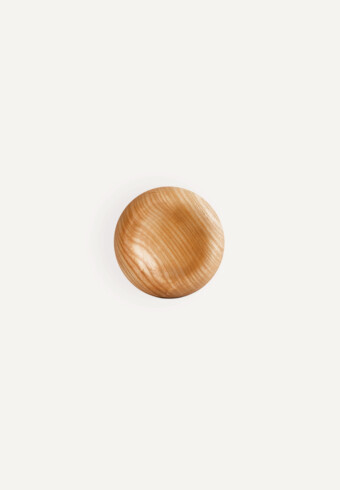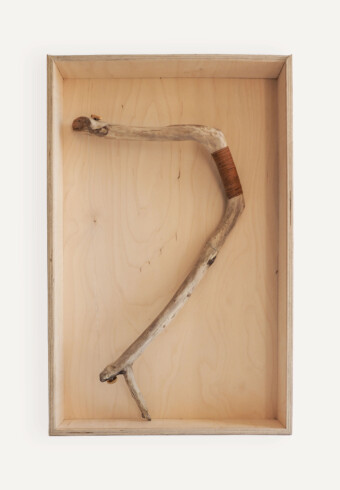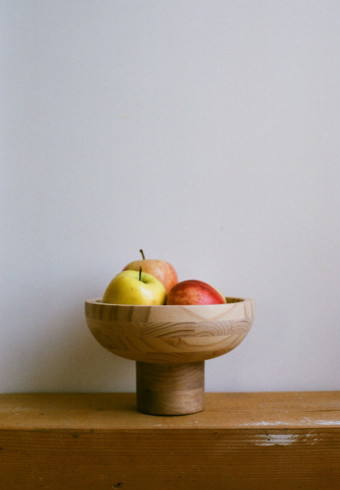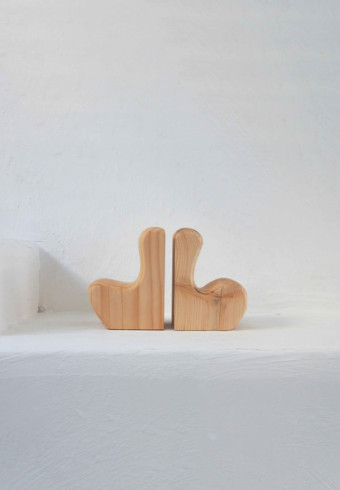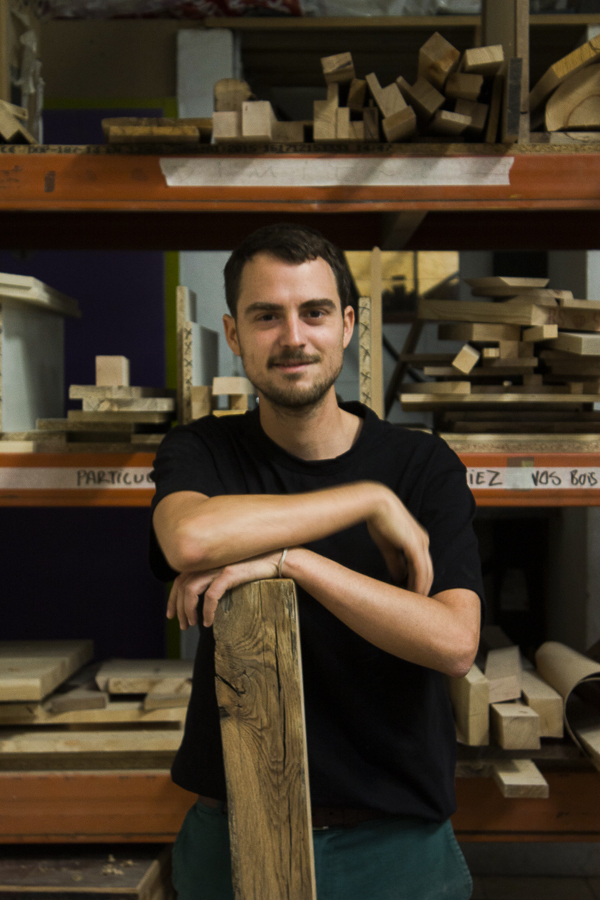
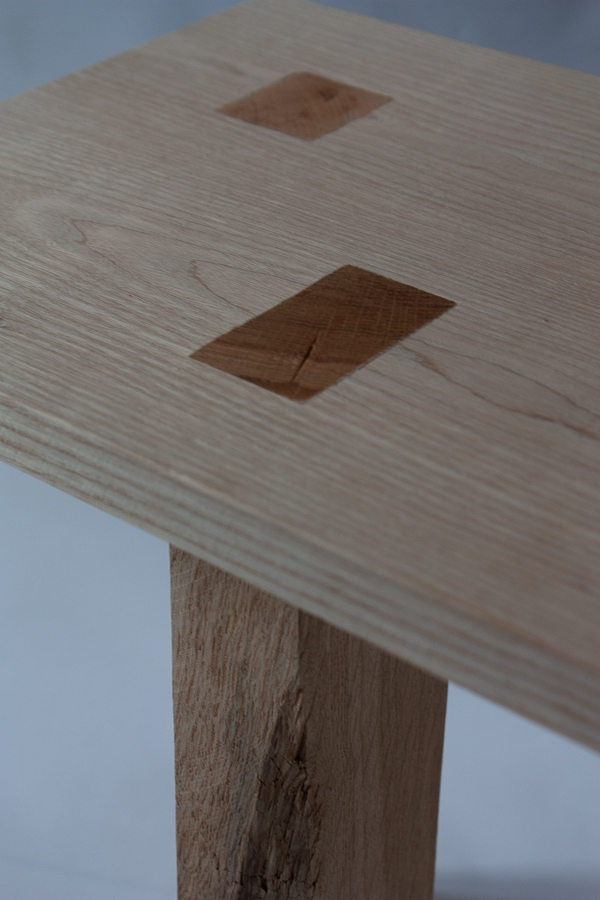
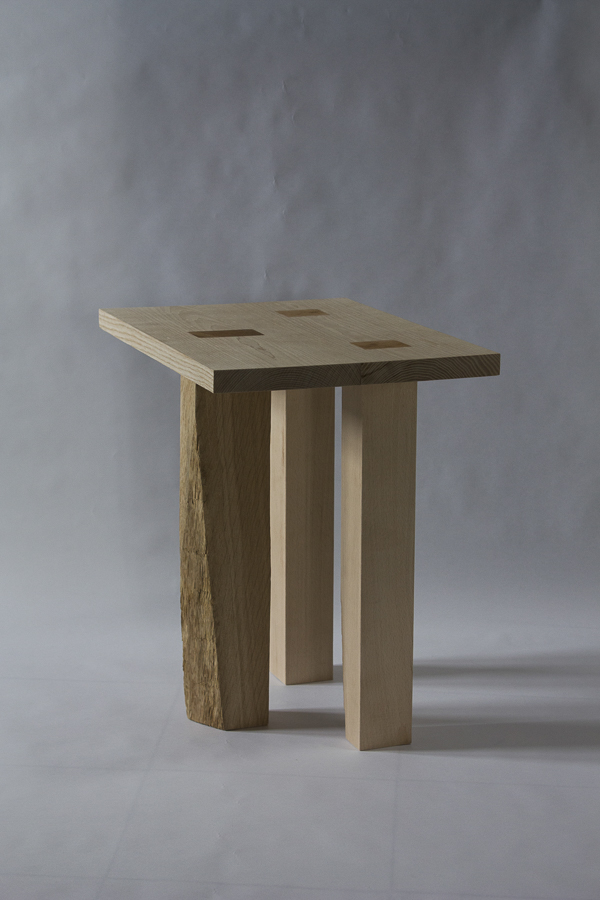
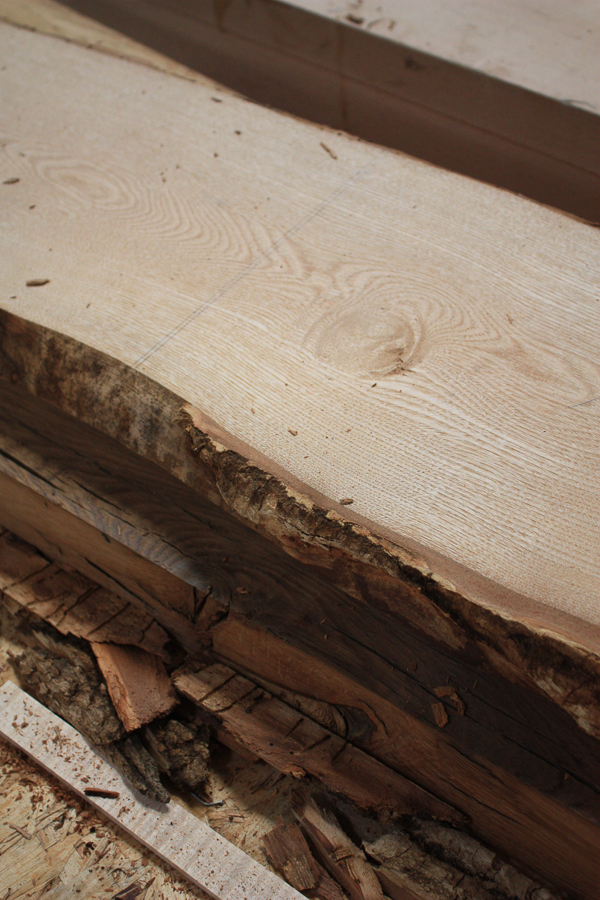
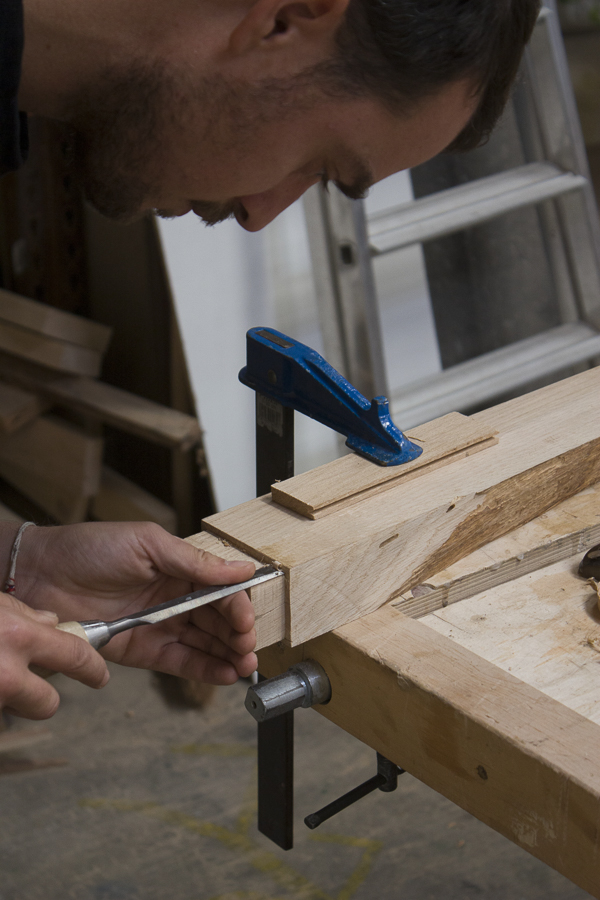
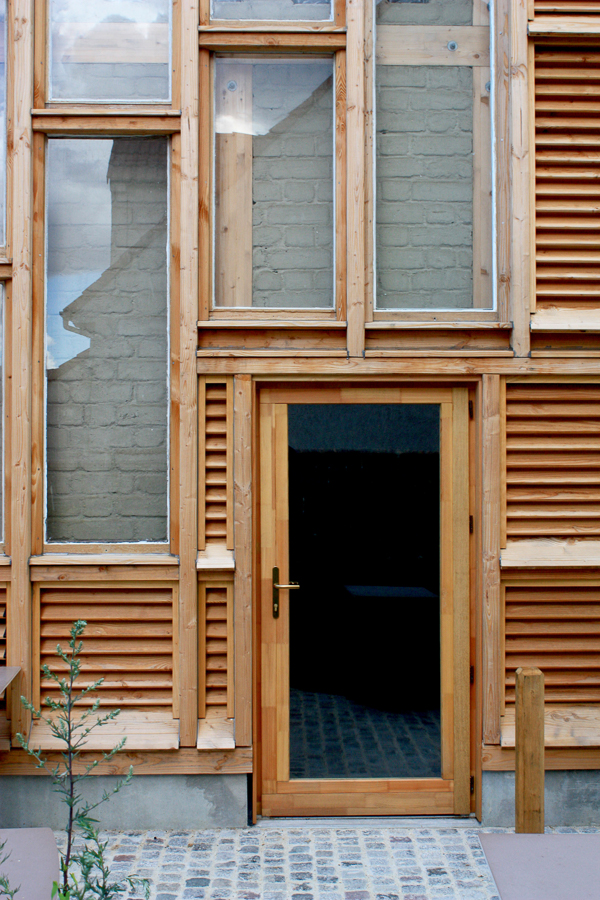
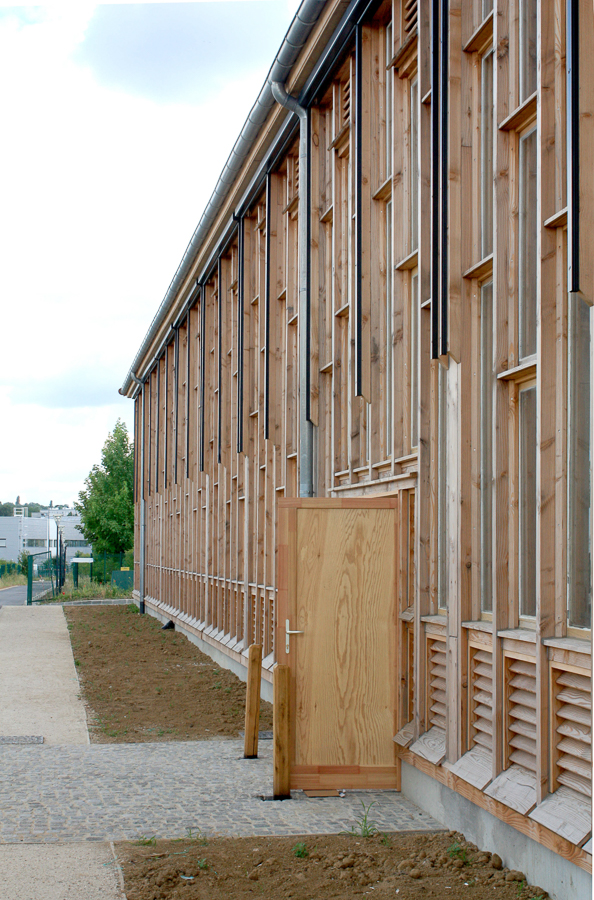
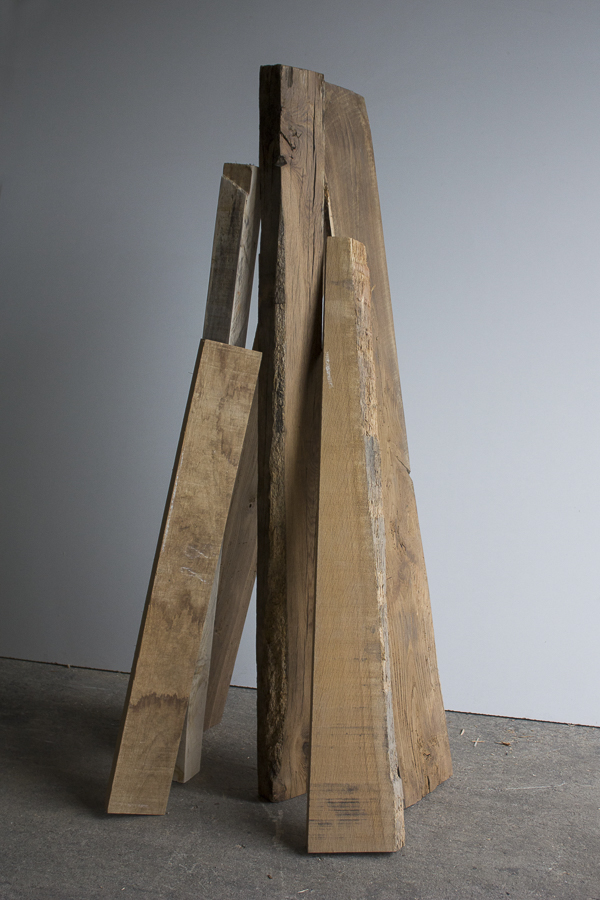
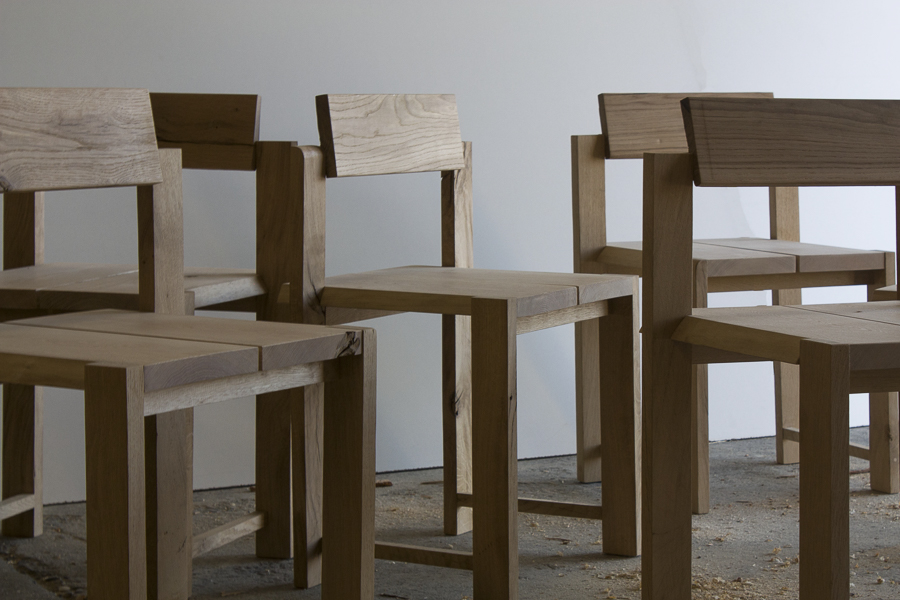
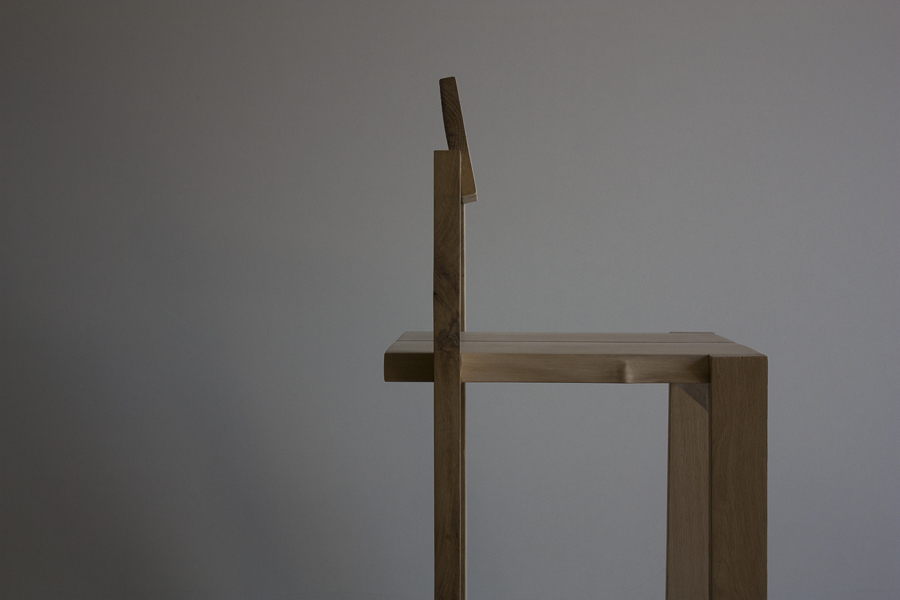
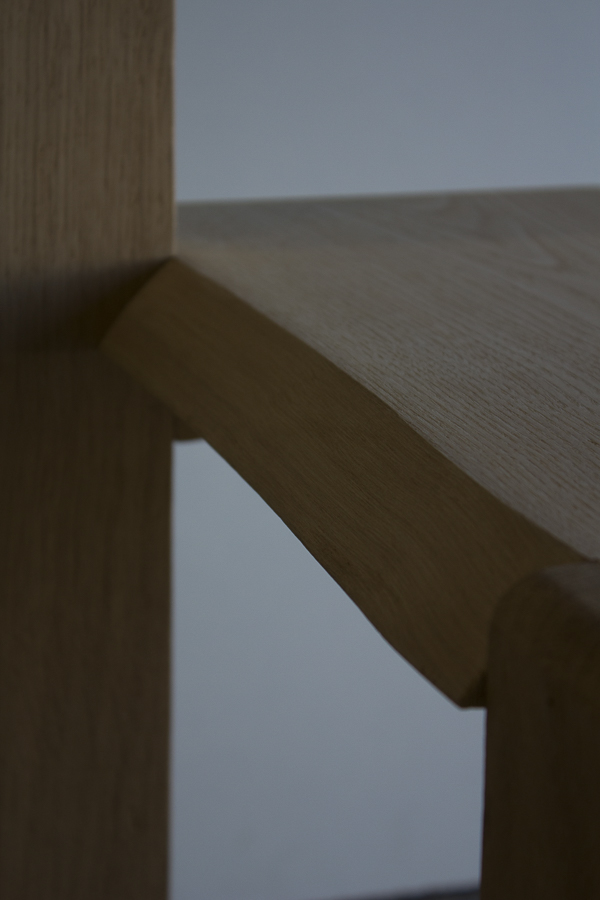
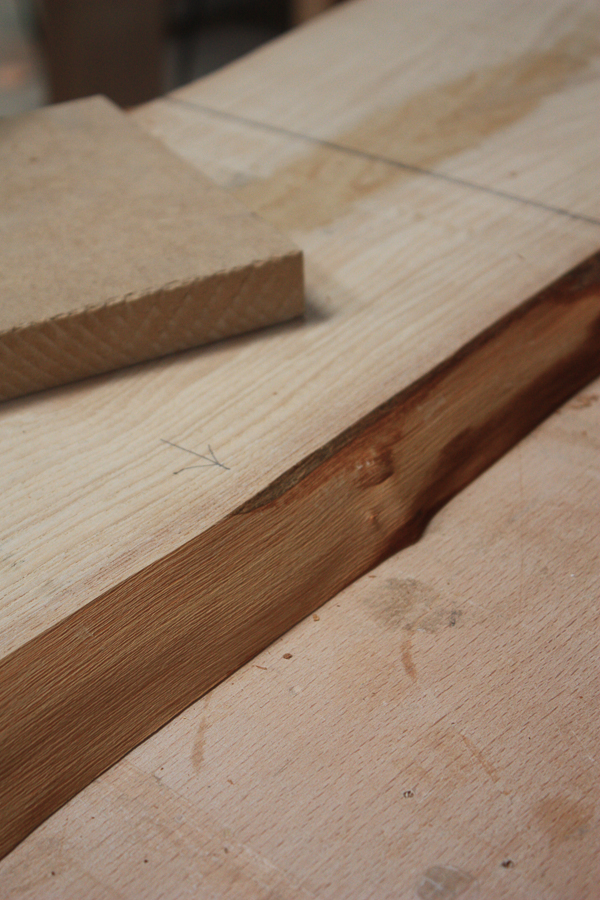
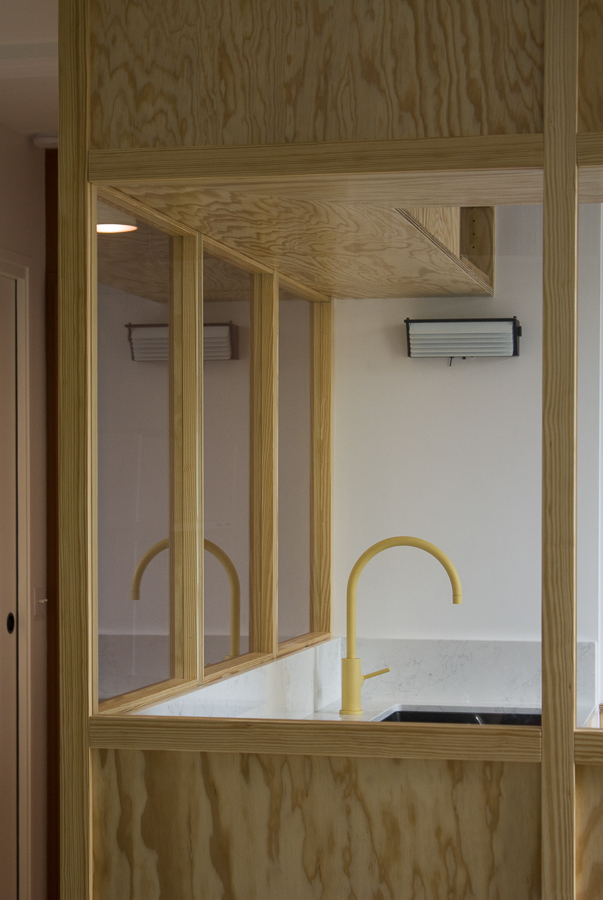
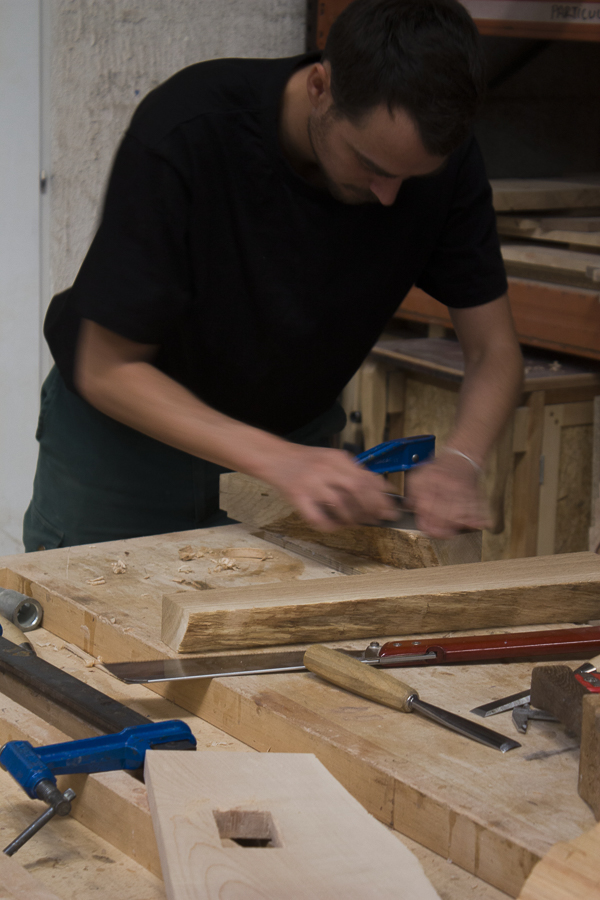
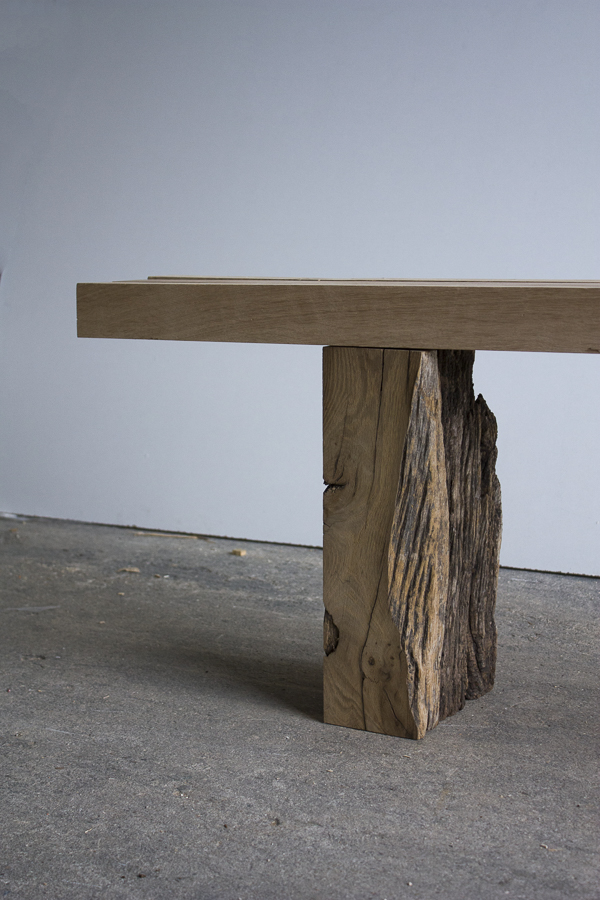

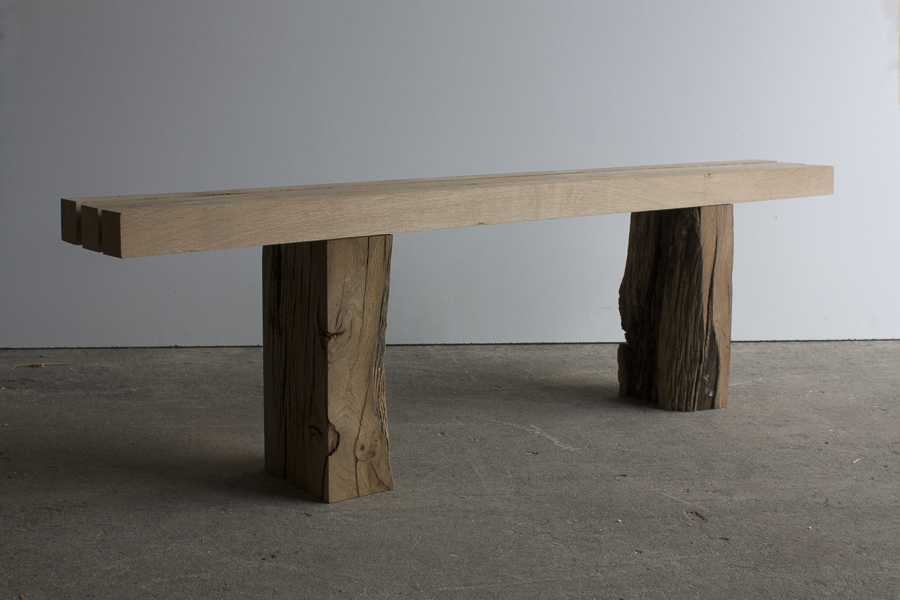
Dimitri Felouzis Atelier DFA

Dimitri's work appeals to us. For its singularity, its brutality, but also its precision. A trained architect and craftsman, he offers meaningful projects. Meet.
Hello Dimitri, can you tell us about your career?
Above all, I trained as an architect, which led me to tinker here and there with friends or on participatory sites. Then a change of practice was imposed on me when I joined the Bellastock association oriented on the reuse of materials in construction. I only worked there for one year, but I understood the importance of protecting our resources, of giving a human dimension to the construction and the social impact of architecture on its territory. It sparked in me the need to do things on my own and to practice woodworking. Now living in Montpellier, I am starting to find a balance because I practice both architecture and wood design within my structure. Atelier DFA. I find the time to alternate my weeks between my work sites and the carpentry workshop in which I work, the Collaborative Joinery. There I meet people, we discuss our practices and we give each other a hand, for me it makes sense to be in a shared place like this one.
You seem very attached to local resources and know-how. Why is this important to you?
It is first and foremost a question of commitment. The world of construction represents 70% of waste. Thinking about how to build, a chair or a house, is to rethink the impact of man on his environment. Reuse is at the center of my practice, because of my background, but also the convictions that I have forged. When we build today it is inevitable to ask the question of the origin of the materials and their production cycle. Using wood to reduce co2 emissions is a good way and it addresses a lot of concerns, but it remains an industry with its drifts and its impacts. Reuse completely bypasses this question and puts human work back at the center by relocating it. It takes a lot of gray matter to work with second life material. Then, my attachment to local resources is an aesthetic question, in the sense of the physical relationship to matter. A natural material produced locally, with craftsmen and passionate actors, it is the guarantee of a material of very good quality, which will live in time and give poetry to an object or a space.
You develop carpentry in parallel with your activity as an architect. What do you like about this practice?
To work at the scale of an object is to be in a direct relationship to the material because I realize my own creations. Something that does not exist in an architect's position, because in this case you think the matter, but it is not you who implements it. To produce oneself is to do while thinking, it is intuitive as a process. And then there is also the temporality. In a few weeks I can make an object that I am satisfied with (in the best case), or in a day I can manage to achieve the detail that I had imagined. It is this spontaneity that I am looking for. And I would say finally, that it is the sensory report which pleases me. It is a material that lives, with its own smell and touch according to each wood, each tree. When I work on a beam that is 50 years old, the wood has worked so hard, it's magic, I travel.
How do you like to use wood in architecture and design?
Wood in architecture is a practical matter. Before being ecological, it is an easy-to-use material. It is light, easily shaped, and it promotes self-construction. I have several projects in progress going in this direction. Some of my clients have time, want to lower costs and want to invest in building their home. This gives a lot of freedom in the appropriation of his place of life. For the architect, it is a demanding material, which only supports the precision of execution. From the study of a project it is necessary to think of the constructive details and assemblies because this has a direct impact on the architecture as a whole. They are permanent back and forth between the scales. In design it's the same thing, thinking about a shape is not enough, you have to know how to execute it straight away. In fact I believe that I practice these two disciplines in the same way. But I would add that for an object, the details are even more significant and ultimately that's where I find my freedom. In these details I can try to show, for example, the naturalness of the wood. With the Grume chair, I worked the fields of the seat with a gouge to follow the grain of the wood and find its natural curvature. This detail comes to me from the work of the artist Giuseppe Penone, in whom there is a real understanding of the material. It was while doing that I perceived the extent of his work.
Can you introduce us to the Grume bench which is part of the “On The Table” Selection"?
The Grume bench is a very simple object with a discreet element of poetry. It's an approach that I try to achieve in each of my projects: I like simple and obvious things with an economy of means. And it takes a long time to find that balance, at least for me. The Grume bench works like a portico, it is an architectural element. It is made up of two imposing piles aged by time and its use, the marks of which I have left visible to tell its story. Then three long sleepers, which form the lintel, on which we sit. In old oak reworked with a plane, these three clear signs contrast with the roughness of the feet and their past.
















- Photographer: Atelier DFA
- Location: Montpellier, France
- Website: https://atelierdfa.com
Share
